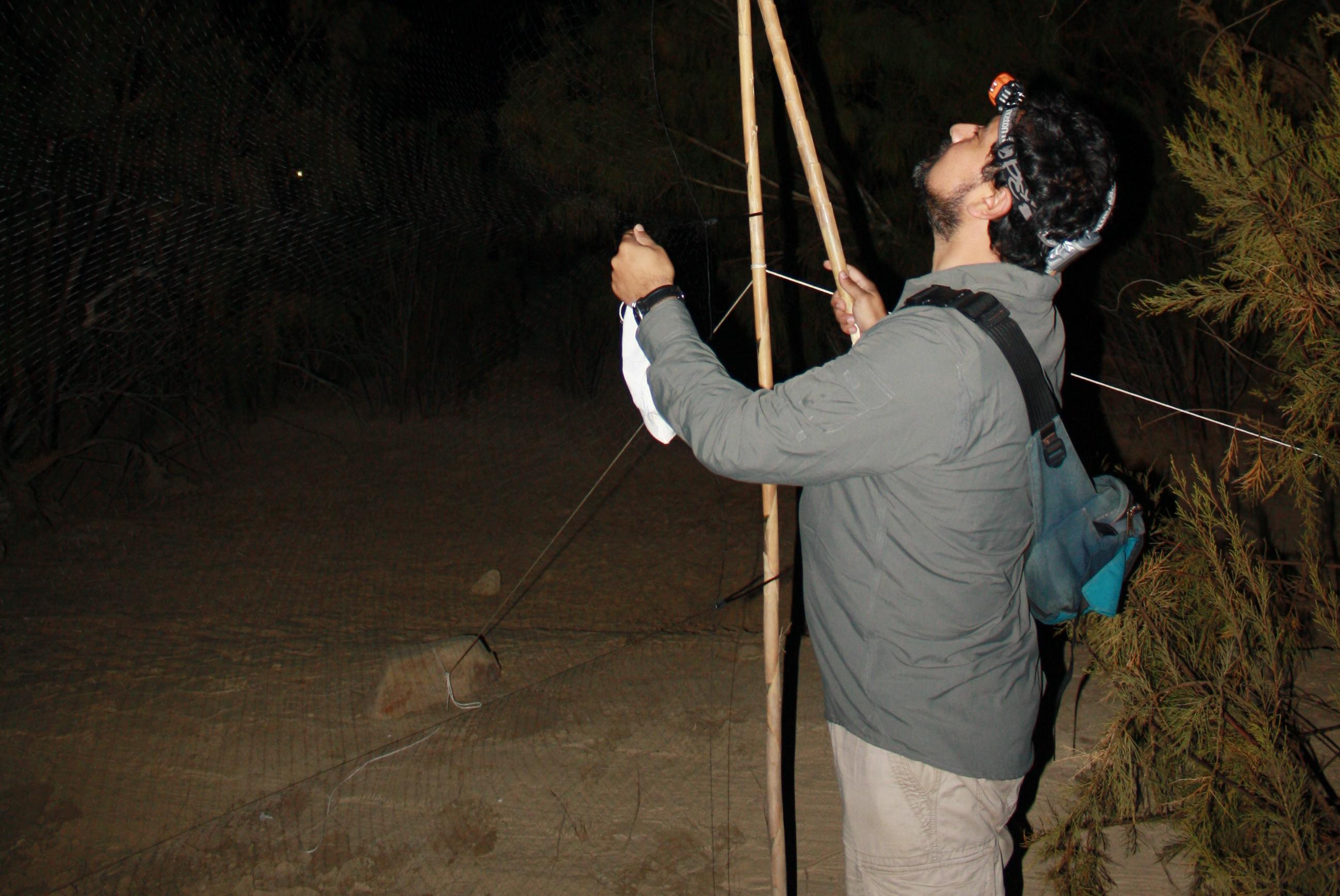Dr. Velazco Discovers Species of Bat in Northern Peru Connected to Ancient Moche Culture
by Gabrielle Thomas ’22

In 2012, Dr. Paul Velazco, now a visiting professor of Biology at Arcadia University, was in a desert in Northern Peru on a postdoctoral research expedition for the American Museum of Natural History (AMNH) when he made an extraordinary discovery. His research expedition, which focused on the blunt-eared bat (Tomopeas), led to the discovery of a new species of bat, Histiotus mochica.
For Dr. Velazco, who has discovered and named more than 20 species of rats, bats, mites, fossils, and frogs, this find was especially intriguing. While Histiotus mochica may have been unknown to science, it was familiar to the Moche, a Pre-Columbian indigenous civilization in northern Peru that existed from about 100 to 850 A.D. The Moche were known for their artistry, and in particular, their remarkably precise, intricate, and realistic ceramics. These ceramics, which were typically hollowed out vessels thought to be used for ceremonies, were primarily in the shape of or featured animals such as foxes, rodents, birds, and bats.

Dr. Velazco found that the Cleveland Museum of Art had an intricate Moche ceramic vessel of a bat that matched the characteristics of the newly discovered species of the genus Histiotus. Upon further research into the ceramic and the new species, Dr. Velazco linked the bat he had discovered in Northern Peru to the bat depicted in the Moche ceramics. Thus, Histiotus mochica, which means among the Moche people, was aptly named.
“This discovery increases Peru’s bat diversity to 192 species, ranking it third in the world behind Indonesia and Colombia,” said Dr. Velazco. “This discovery highlights the importance of incorporating the knowledge of present and past indigenous cultures around the world into current research. Indigenous peoples play a key role in protecting and conserving nature. Scientists are increasingly acknowledging the importance of establishing their partnerships with Indigenous peoples to improve and enrich the knowledge basis that builds conservation policy and practice.”
Dr. Velazco published this discovery in an article in the Oct. 13 American Museum Novitates, which highlights the bat ceramic vessel’s “large ears and tragus, ears that are connected by a high band of membrane, and lack[s] a noseleaf, and clearly represents an individual of the genus Histiotus.” The article also places the species in a context that links it with a past Indigenous society, connecting ancient and modern knowledge.
Dr. Velazco originally set out to study frogs, but his colorblindness steered him to focus his research on bats, as color is a key diagnostic feature of many frog species.

“Bats are so diverse and, more importantly, they offer a series of ecosystem services to us,” said Dr. Velazco. “Of all the species I have had the privilege to describe, this is my favourite. Being able to place this species in a context that links it with past Indigenous knowledge is important to me.”
Dr. Velazco’s primary research focuses on understanding mammalian diversity patterns in the neotropics. He earned a bachelor’s degree in Biology from Peru’s Universidad Ricardo Palma, a master’s degree in Zoology from Peru’s Universidad Nacional Mayor de San Marcos, and a Ph.D. in Ecology and Evolution from the University of Illinois at Chicago. He conducted postdoctoral research in Mammalogy and Paleontology at the AMNH. He joined the Arcadia University community in 2019.

